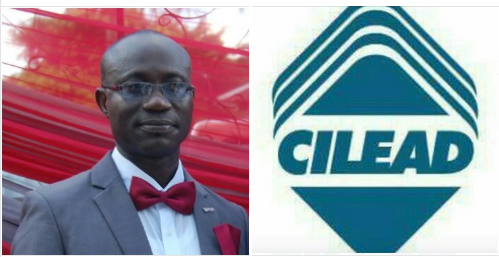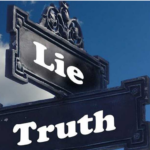LEADERSHIP SKILLS: The Art of Leadership
Speaker: Mr. Aniebiet Udofia MPMI, FIPMN, FNIM, FCIL President “CILEAD”
Rhema “Give instruction to a wise man, and he will be yet wiser: teach a just man, and he will increase in learning.” (Proverbs 9 v 9)
Two facts about leadership
Aristotle, the Greek Philosopher who lived from 384-322 BC wrote. “He who has never learned to obey cannot be a good commander.”
The way human resources and technology are mishandled and uncontrolled have also shown that, effective leadership is not possible by those with no experience of conditions at the lower levels of any graded organization or society.
Attitudes about leadership
Many people hold the following misconceptions about leadership.
That only a select few can be leaders.
That the leadership quality is inborn.
That ‘leadership’ means only ‘formal leadership.’
(Formal leadership involves holding the position of supervisor, manager, executive or an elected or appointed office).
The fact of the case
We are all leaders at one time or the other in our lives.
We more often than not, lead more than we realize.
We get more involved in informal leadership at work.
You don’t need to supervise people to be leader.
You can be a “leading” salesman or a “leader” in your profession.
Most of the time, informal leadership is more powerful than formal leadership.
Who is a leader?
Somebody who leads or who takes initiatives can be described as a leader in its simplest form.
There are however other words that appropriately defines a leader.
He can be the boss, can be a doyen, can be somebody notable, and can be a dean, a guide or a pilot.
Who can become a leader?
Leadership at any level is built on basic management skills.
Leaders see the patterns but delegate the details. To truly lead a group, you must not lose sight of the long view. You need to see the patterns, trends, and opportunities rather than get caught up in details. Delegation is the skill that you apply in getting the details executed. You simply keep your hands off, while you keep your eyes on.
Leaders need specific goals to reach their vision. Vision is a picture of the envisaged future. It is universal and not precise; you therefore need specific goals that will guide you to your vision.
Goals that work must be specific, measurable, achievable, realistic and time specific.
Leaders need to make decisions fast. How quickly a leader moves forward in his goals will be determined by the decisions made. Our successes or failures are usually based upon the quality of our decisions. Inability to make decision one way or the other has always been a leader’s death trap.
Leaders see to their personal growth so that they do not expire, they also help the staff to grow in order to facilitate a corporate growth of the organization.
Leaders take risks, measured and reasonable risks. If a leader can realistically estimate the worst possible outcome in risky venture, risk taken can be of tremendous asset.
Leadership styles
There are three basic types of leadership styles. They are autocratic, democratic and free-rein.
Autocratic leadership
Autocratic leadership means the leader seeks obedience from his followers. He makes all decisions. It does not mean that the leader becomes a dictator. He determines the policy and assumes full responsibility for all action.
This style of leadership is most desirable in situations in which time is the primary factor. It requires less time in decision making.
It is highly effective in the leadership of dependent people or those who prefer absolute non-participation in decision making. In other words, they need or desire direction.
Democratic leadership
Democratic leadership involves the leader as a moderator. He draws ideas and suggestions from the group. Discussion and consultation are essential tools. This style does not however mean that every decision is voted upon.
The democratic leadership technique is far more group-centered than the other two types. In the progress of group development, each individual member is involved in the process of action. In most cases, this type of leadership fosters creativity and self-satisfaction in each member involved.
Free-rein
Free-rein style of leadership has been called the ‘hands off’ method. The leader here is just like an information booth. His role is less noticeable and he exercises less control. This does not however mean that the group is leaderless. In fact, free-rein often requires more time consuming efforts on the part of the leader than the other styles.
A good leader must use the combination of all the leadership styles to his advantage.
For example, a manager directs (autocratic) his secretary to file a particular report with the head office by a specific time. He consults (democratic) with his clients on the best method of meeting their needs.
Balancing your power sources
The more personality power you develop, the stronger your role can be as a leader. You will be able to communicate better. You will be more effective in persuading people to accept your vision. Your stronger personality will enable you convert more employees into followers.
Regardless however of the power you have, application of it is the most important. You must be sensitive to the others. The only way to facilitate sensitivity is to be balance personality power with both role power and knowledge power. There are many variables that can be called into play. For example;
– A leader with great knowledge can be effective even with a minimum of personality power.
– A leader who downplays role power and makes the most of his or her knowledge power can be effective with just modest personality power.
– A leader with little role power and in a position where knowledge power is not highly important, is dependent upon personality power.
To be an effective leader
Leadership starts when someone decides to work to build their skills. Power source comes automatically into play. When this happens, the following considerations surface.
– How can one make use of all power sources?
– When is it best to draw power from one source as opposed to another?
– How does one achieve the perfect or best “balance” in the daily utilisation of all three sources?
There are three general keys in answering these questions
Key no.1. Downplay your role power (Role power is a temporary franchise)
Key no.2. Play up your knowledge power. (knowledge helps to build a good relationship and it gives an impression of having something to offer)
Key no.3. Capitalise on your different physical traits. (more confidence equals more personality power)
Characteristics of effective leaders
“Moreover thou shalt provide out of all the people able men, such as fear God, men of truth, hating covetousness; and place such over them, to be rulers of thousands, and rulers of hundreds, rulers of fifties and rulers of tens.” (Jethro’s advice to Moses in Exodus 18 v 21)
People find it easier to accept an individual as their leader when they recognise valued mental traits and standards.
“The integrity of the upright shall guide them: but the perverseness of transgressors shall destroy them.” (Proverbs 11 v 3)
Examples of such mental traits are:
Patience, integrity, tact, courage, memory, discipline, decisiveness, fairness, consistency, ability to take pressure, bounce-back ability, willingness to accept responsibility, determination, ability to take risks, positive attitude, sense of rumor, etc.
You must excel in whatever you are doing before you can jump into a leadership position. (*…. If any man desires to be the first, the same shall be last of all, and servant of all.” Mark 9 v 35)
Effective leadership begins with effective follower ship.
If you are a teacher, you must be a superior teacher.
You cannot lead an organisation that you do not believe in. your lack of commitment will not put you on the leadership ladder.
Outstanding time managers who are good at setting priorities and establishing goals can become ladders.
What is the power base of a leader?
The primary source of power is God, the creator of heaven and earth.
“God hath spoken once; twice have I heard this; that power belongeth unto God.” (Psalm 62v 12)
God is the origin or source of power and the fountain of mercy. He however uses people, situation and circumstances to raise leaders according to His discretion.
The leader’s power comes from the people whom God has allowed to elect him from the organization he serves. No leader has a mandate from his people to do as he pleases. Instead, he has an obligation to act in their best interest.
In management concept, there are three sources of power. The personality power, role power and knowledge power.
Personality power
Personality power is the development and use of your best traits to influence others. It is being the best you can be on personal basis.
Personality power is expressed through both physical and mental traits.
Personality power is transmitted when people make the most of their best traits.
Personality power is very important to leaders. Without it followers will not be inspired to reach for new goals.
Personality power carries as much as 50% of the power source. It will however be a big mistake to underestimate the possible power of the other two.
Role power
Role power comes from the position you hold. This is not power that come from your knowledge or experience. It does not also come from your personality. Role power goes with your position regardless of who occupies it. The moment someone is promoted to leadership position, he automatically gains power. At one time or the other, we have all witnessed the abuse of role power.
Role power carries only about 12.5% of leadership power source.
Knowledge power
Knowledge power comes from understanding the skills and techniques required for effective behaviour in a given role. As our society becomes increasingly sophisticated and technical, roles become more specialised. Knowledge power becomes more and more important with his services. He suggests (free-rein) to his assistants that a schedule be worked out for meeting mailing deadliness, leaving the development of the schedule to his assistant’s choice.
Importance of self-image on leadership styles
Your personal leadership style depends largely on your self-image.
If you have a good self-image, you will function confidently as a good leader.
If on the other hand you don’t see yourself as a good leader, you will not be a good leader. You have to change yourself –image before you can be a good leader.
The following are the symptoms of a poor self-image
– Highly critical of others.
– Feels compelled to get recognition, even when it is not deserved.
– Bossy, unable to accept criticisms.
– Feels threatened by confident people, seeks to show them up.
– Will commit to do something, knowing that it probably won’t get done.
– Runes himself down, using self-critical statements like, “I blew it again,” I knew I couldn’t do it.”
Conclusion: What makes a leader or a follower?
Some people are well able to take control of their lives and to realise the ambitions, while others never seem able to get started. Everybody has the potential – The key is for you to realise that you may not be able to change anybody, but you have everything it takes to change yourself. Be determined to be a leader and you are already one. You must however begin with being a good follower. It is in effective followship that effective leader manifests.
BIBLIOGRAPHY:
(1) Pat Heim, Ph.D, Elwood N. Chapman: Learning to lead.
(2) Junior Chamber International: Manual on Individual




